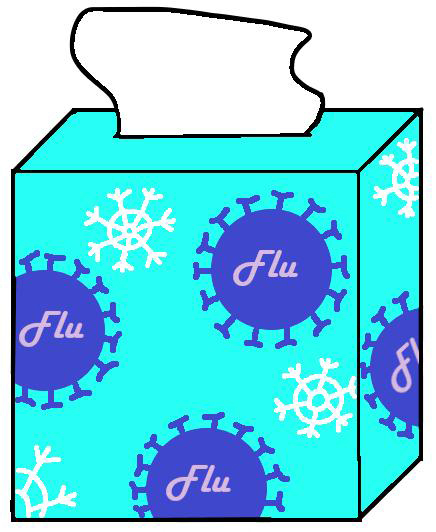Flu Season Set to be More Severe than Previous Years
December 16, 2022
The onset of the colder months has seen the resurgence of the flu season, with the number of cases in San Diego reaching more than two thousand near the end of November.
According to the San Diego County Respiratory Virus Surveillance Report for December 1, presented by the Health and Human Services Agency (HHSA), the number of new cases in November for San Diego County was more than two times that in October, with the total being 12,946 for the fiscal year (sandiegocounty.gov).
Likewise, there was an outbreak of the flu in October at Patrick Henry High School wherein more than half of the students were out sick, as per CBS. According to their article, this came shortly after their homecoming dance (cbsnews.com).
A paper published by the Center for Disease Control and Prevention (CDC) detailed that “…in 2022, [the flu] circulated in Chile months earlier than during pre-pandemic influenza seasons.” Moreover, “Northern Hemisphere countries might face influenza activity with atypical timing and intensity during the 2022–23 season” (cdc.gov).
Indeed, the HHSA report also shows that the current flu levels have been reached nearly three months earlier than last year, with the number of cases reaching similar levels in the 2019-20 fiscal year, but not until late January (sandiegocounty.gov).
Dr. Jess Mandel of UC San Diego Health said, “The last two flu seasons have been more mild than usual, presumably because of measures to slow the spread of COVID.” However, she went on to say, “One effect of this has been that fewer people have had their immune systems primed by exposure to more recent flu variants. Therefore, we expect to see more flu cases and more severe cases and deaths than in previous years.”
According to Dr. Andrea Herman, a pediatrician at San Ysidro Health Center, the reasons for the flu’s seasonality are that lower temperatures and humidity are favorable for the virus’ transmission, and our close proximity to others during the colder months influence the spread. “When it is cold we tend to spend more time crowded indoors with windows closed, so we are more likely to rebreathe the same air as others,” said Herman.
One of the first precautions one can take to avoid the flu is getting the annual vaccine. “The flu vaccine is better some years than others, but the science clearly shows that if you vaccinate large numbers of people and compare to an equal number of unvaccinated people, the vaccinated group gets the flu much less often,” said Herman.
Further precautions, according to Herman, include avoiding sick people, washing your hands, and covering your mouth and nose. She also added that there is evidence suggesting that “…stress, lack of sleep, and low levels of vitamin D can all increase our risk of getting the flu.”
According to UC High Nurse Karoly Porkolab, students who have displayed symptoms of the flu should “…stay home, rest, drink fluids and isolate. They should stay absent until they show no signs or symptoms of the flu.”
“I totally understand being tired of pandemic safety precautions, since I am tired of them too, but we need to continue to employ safe practices where needed. Influenza is a big deal… [it causes] 140,000 to 810,000 US hospitalizations per year, and results in 12,000 to 61,000 US deaths annually,” said Mandel.


